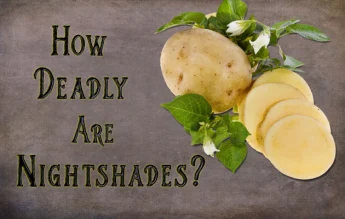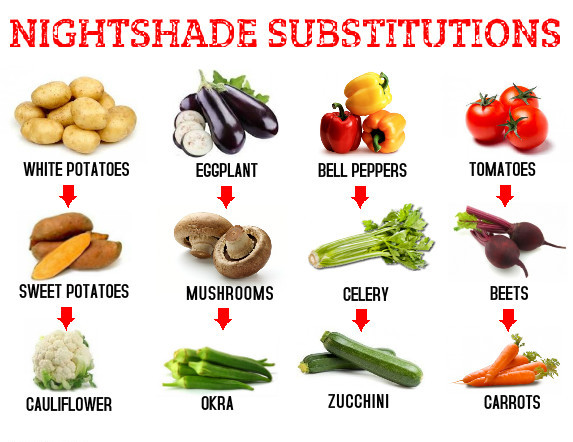WHAT ARE NIGHTSHADES???
Solanine is concentrated in the leaves and stems, and that’s one of the reasons we don’t eat those parts of the plants, it is a chemical which can cause symptoms of poisoning in humans if ingested in large quantities.
A big salad of tomato or potato leaves might actually contain enough solanine to give you an upset stomach.
Perhaps you’ve also heard that potatoes with sprouting eyes are poisonous. That’s because potatoes that have started to sprout or have developed a greenish tint to their skins are often higher in solanine. It’s best not to eat them.
Which vegetables are night shades?
Similar sounding foods that are NOT nightshades:
Symptoms of Nightshade Intolerance
digestive distress (heartburn, nausea, diarrhea, gas,bloating, gurgling, IBS, leaky gut),
mood swings,
depression,
headaches,
joint pain or stiffness,
muscle aches,
insomnia,
malabsorption (iron, calcium, minerals).

Can you really be poisoned by green or sprouting potatoes?
But what about when they turn green? Most of us are aware that we shouldn’t eat green potatoes. But why?
Exposure to light triggers certain physiological reactions within the tuber. The production of chlorophyll triggers the green colour – this is not at all harmful and indeed contains high quantities of beneficial minerals such as iron. It is also what creates the deep green colour found in all edible leafy green vegetables.
But light and warmth also triggers the production of Solanine – This chemical tends to be concentrated under the skin of the potatoes alongside the chlorophyll and also in the newly developing shoots. So it may be advisable not to eat green potatoes or those that have begun to grow shoots.


